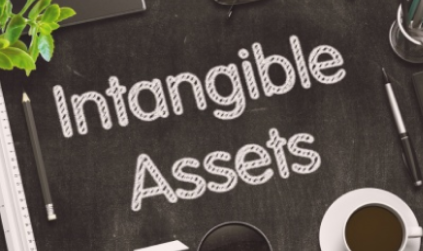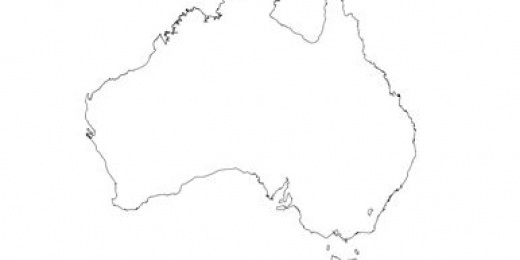Intangible Assets and their impact on valuations Defining Assets.
Share

Part 1) Defining Assets
This is the first in a series of articles on intangible assets, however, before I get into too much detail I thought I should explain different asset classes.
Assets are generally classified in three ways:
- Convertibility: Classifying assets based on how easy it is to convert them into cash.
- Physical Existence: Classifying assets based on their physical existence (in other words, tangible vs. intangible assets).
- Usage: Classifying assets based on their business operation usage/purpose.
An asset will always fit into one of each of the above categories. Why do we have so many different classifications? It depends on what we are trying to achieve with our analysis.
Classification of Assets: Convertibility
If assets are classified based on their convertibility into cash, assets are classified as either current assets or non-current assets. An alternative expression of this concept is short-term vs. long-term assets.
- Current Assets
Current or Liquid assets are assets that can be easily converted into cash and cash equivalents (typically within a year). Current assets include Cash & Cash equivalents, Short-term deposits, Accounts receivables, Inventory (stock), & Marketable securities.
- Non-Current Assets
Non-current or Fixed assets are assets that cannot be easily and readily converted into cash and cash equivalents. Non-current assets include: Land, Buildings, Machinery & Equipment, Patents, & Trademarks.
Classification of Assets: Physical Existence
If assets are classified based on their physical existence, assets are classified as either tangible assets or intangible assets.
- Tangible Assets
Tangible assets are assets with a physical existence (we can touch, feel, and see them). Examples of tangible assets include Land, Buildings, Machinery & Equipment, Cash, Inventory, & Marketable securities.
- Intangible Assets
Intangible assets are assets that lack physical existence. Examples of intangible assets include Goodwill, Patents, Brand, Copyrights, Trademarks, Trade secrets, Licenses and permits, & intellectual property.
Classification of Assets: Usage
If assets are classified based on their usage or purpose, assets are classified as either operating assets or non-operating assets.
- Operating Assets
Operating assets are assets that are required in the daily operation of a business. In other words, operating assets are used to generate revenue from a company’s core business activities. Examples of operating assets may include Cash, Accounts receivable, Inventory, Buildings (if used by the business), Machinery & Equipment, Patents, Copyrights, & Goodwill.
- Non-Operating Assets
Non-operating assets are assets that are not required for daily business operations but can still generate revenue. Examples of non-operating assets include Cash investments, Marketable securities, Vacant land or Buildings (not used in the business), & Machinery & Equipment (not used in the business).
Importance of Asset Classification
Classifying assets is important to a business. For example, understanding which assets are current assets and which are non-curent assets is important in understanding the net working capital of a company.
Determining which assets are operating assets and which assets are non-operating assets is important to understanding the contribution to revenue from each asset, as well as in determining what percentage of a company’s revenues comes from its core business activities and therefore being able to determine the value of a particular business.
So turning our minds to the impacts of tangible and intabgible assets in a business valuation.
Tangible Assets
As described above, Tangible assets are typically assets that you can physically touch, the classic example would be plant and equipment.
Literally, every time I see plant and equipment on a balance sheet I think of Bertha (below), because I am a child of the 1980s growing up in the UK and Bertha is a big machine.
For those who missed out this is Bertha*

Now in asset terms, Bertha is a tangible, non-current, operating asset, this is because:
- Bertha is tangible, it (she?) is a big machine that physically exists you could walk up and touch.
- Bertha is clearly non-current and a lot of money was invested in its (her) construction and Bertha would be expected to have an economic life of more than 12 months.
- Bertha is an operating asset, Bertha produces goods for the Company to sell.
Intangible Assets
Unlike tangible assets, intangible assets do not physically exist.
The most common intangible assets to be included in valuations would be brands and patents. These would both be considered to be non-current business assets for the following reasons:
- For the brand or patent to have significant value it would be expected that economic benefits will flow from it for more than 12 months;
- Typically it would be expected that the asset plays an important role in the ongoing operation of the business, (If Coca-Cola sold their brand the Company would be left with numerous bottling plants trying to sell an unbranded cola to a saturated market).
Although intangible assets can be both non-current (such as a lucrative contract with less than a year left to run) or non-business (such as a patent that has no ongoing value to the Company but might be useful to another industry, or a retired brand) this is the exception rather than the rule.
Understanding which assets are tangible and intangible helps to assess a businesses valuation as well as its risks and solvency.
Notes & Acknowledgements:
* Bertha is a British stop motion-animated children’s television series about a factory machine of that name, comprising 13 episodes that aired from 1985 to 1986. Other major characters in the series were Mr Willmake (factory owner), Mr Sprott (Bertha’s chief designer) and Tracy (Mr Sprott’s young assistant). All the characters were designed by Ivor Wood, and the series was produced by his company, Woodland Animations. It was broadcast on BBC Television.






